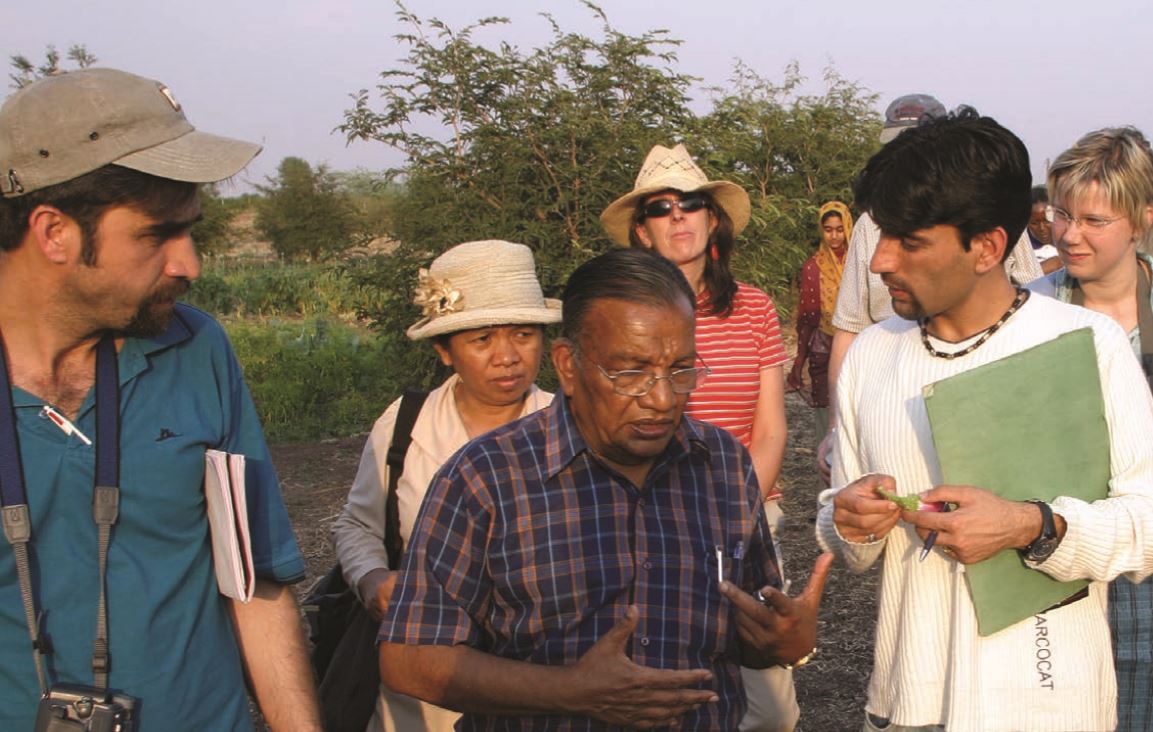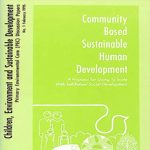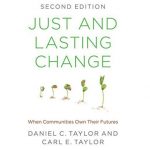Most programs intending to scale up propose doing so by sending in money to fund the process and perhaps people to tell what to do. SCALE represents a means of scaling up that is led by internal dynamics utilizing both internal and external resources. Scaling emerges from inside.
In SCALE, outsiders and resources help, but the momentum emerges from inside. Government provides the enabling environment, which can differ widely from place to place. (It can even be working against positive change, but still it must be used as the enabling environment—SEED-SCALE grows evolutionary processes, not revolutionary.) What is important is that communities learn how to use this environment, whatever it is, as enabling their growth. (Often one way of utilizing a negatively functioning environment is external negative publicity, but consistently effective are those of counter-intuition that Gandhi used.) Experts can assist in this, finding how to turn that context to advantage, with ongoing technical breakthroughs and education.
Those concerned with especially international development speak of when social change takes off. An almost magical, society-encompassing change seems to accelerate on its own. A community considered backward is now “developed.” This perception is not accurate. Most professional literature addressing this process is also incomplete, as it usually overlooks the whole, being written from the viewpoint of a discipline: health, education, transportation. Taking off happens, but the process is complicated, not driven by one dynamic. A society is a complex adaptive system; they function by absorptive, not function by cause and effect dynamics.
SEED-SCALE reveals this complex process. It connects large, qualitative change with increased coverage. SCALE, thus understood, refers not to the outcome, but to the process. And the process is the positive feedback loop–the Revolution of Rising Aspirations (mentioned at the top of this chapter)–where one feedback loop is growth in size that feeds growth in life quality.
As numbers for some particular positive dynamic increase, they stimulate rising desires for a quality of life extending beyond the impact first achieved. This broadening quality of life draws in greater numbers, and these further lift quality. This attracts more people, and in their fulfillment they develop new aspirations. Dynamics and relationships are changing; energies refocusing, driven by aspirations, and, cycle upon cycle, actions turn aspirations into reality.
Going to scale is the community’s voyage into life complexity. Local actions are being shaped by global forces, and local realities are influencing global dynamics. SEED-SCALE points out that this unfolds along three dimensions. Physical reality exists in the four dimensions of Time and the three of Space. Hence, by parallel logic, social reality also has multi-dimensionally.
- SCALE One (Stimulating Community Awareness, Learning, and Energy) learns from and promotes successful community projects. This is a numerical or quantitative expansion. It is the process that is usually meant by the term scale.
- SCALE Squared (Self-Help Centers for Action Learning and Experimentation) transforms demonstration projects into learning centers for others. This is qualitative expansion, where experiments extend learning to improve the quality of life.
- SCALE Cubed (Systems for Collaboration, Adaptive Learning, and Extension) promotes systematic extension throughout regions and societies. This is changing the enabling environment–the systems–to increase cooperation among members, augment comprehension among those members, and promote new approaches through the whole society. Values, policies, and financing are the variables used, and adjusting these causes both quantity and quality to change.
When applied to all three dimensions, the SCALE acronym stands for System for Communities to Adapt Learning and Expand. This multilevel acronym, which probably appears overly ornate and reductionist in the academic world, provides a useful formula for the complexity of the process when it is taught at the field level, and must transfer into other languages (as SEED-SCALE now has as a System of Thought).
The many SEED-SCALE acronym definitions reinforce an important point: development means different things to different people at different times. One person’s development is not the next person’s, and the labeling advanced here is intentional to show this complexity. Economic prosperity is not development; it is one aspect. If it was the whole, those who center change in their lives on religious priorities will feel rejected. Similarly, those who see economic growth as undermining nature’s fabric will feel they have no way to advance their concerns. The SEED-SCALE nomenclature gives each experience a situation-specific voice.
Sometimes SCALE One comes first, especially when the change is spontaneous. One or more communities make changes, and these spread to other neighborhoods. At other times, SCALE Squared begins the process, particularly when experts start demonstrations for training people in ways to effect a change, and then promote the extension of that change. Commonly, SCALE Cubed starts the sequence with the government putting policies and financing in place; then innovation takes off in multiple places, to be refined through adaptation and training.
SCALE One is the growth of a particular change. SCALE One growth can occur because the community has fostered the project, or it can come from an outside stimulus and outside resources. Alternatively, a nongovernmental organization may have been extending a project, or the community could have done so. SCALE One does not require growth to be driven by the SEED-SCALE framework of emphasizing internal energies and resources; often SCALE One results because change is using external resources. Growth of an activity, whether in size or in numbers, is occurring.
Improving the quality of life is what people want; some improvement as that give hope that more will follow. The type of activity or its cause is not what matters. Hope is the most powerful driver of development. (Hope for the future is why many dutifully die in war when systems actually are collapsing.)
SCALE Squared changes the activity, advancing quality. People learn new ways of doing things through innovation, technology, and experimentation. This dimension has two parallel functions: one is action learning; the second is experimentation. Action learning is seeing then implementing ideas. Experimentation is their adaption and adoption. Such change traditionally occurred by happenstance–though it is still SCALE Squared–but when formalized in a SCALE Squared Center, it is a place to which people go to learn and experiment. This is now frequently done on YouTube and the Internet. But when formalized, people are encouraged to ask questions and take part in training. What follows is seldom direct copying; rather, it is tinkering with ideas and adjusting components to fit resources. The result: we feel is our lives getting better.
SCALE Cubed is the enabling environment. It is built on three systems: ones that create quantitative growth (SCALE One), ones that promote qualitative change (SCALE Squared), and ones that link synergistic networks. These systems utilize professional-role reallocations, training, policy changes, and financial incentives. They focus on readjusting values, responding to local as well as global influences, managing resource streams, and updating policies and programs. Well-managed, the three SCALE Cubed systems enable change to unfold exponentially.
Systems for collaboration. Synergy is promoted among services. Scaling optimizes as people collaborate: communities, officials, and experts. It utilizes a range of social factors: policies, regulations, administrative infrastructure, financing, information systems, ownership, transportation, and marketing. Seed grants can help such collaboration. Communication enhances synergy, and the range of communication options is vast: special classes, regional events, social media, competitions, concerts, workshops, and festivals. The enabling context becomes more powerful when utilized collaboratively.
Systems for adaptive learning. Development is a process, and the system for adaptive learning keeps development evolving (SCALE Squared). For that, momentum must continually adapt as the larger world is always reshaping. Traditionally, this was hit-or-miss for communities. One community might grab a good initiative one time, but not be so lucky the next. It was hard to tell whether an option was proven, even harder to find it adapted to a similar-to-you context. Adaptive learning can now be systemized through visits and workshops at a SCALE Squared center, to expose people to new ideas and skills. The process becomes much more effective if it gets local, regional, or even national support.
Systems for extension. Actions (SCALE One) may extend spontaneously, but a system can advance this if a central authority uses money and staff for this extension. Ideas and values the formally propagate. Financing is put in place. Supplies are delivered and accounted for. This extension can occur through coordinated channels (such as the above), or it can occur simply by promoting an idea, training people, and drawing resources from nongovernmental groups, religion, businesses, and the media. It can happen with internal energies and resources, or it can be a funded service.
In SCALE Cubed, three changes unfold. First, policies change, and, with them, laws, regulations, and administrative infrastructures. These affect trade, transportation, marketing assistance, information access, many types of training, and ownership of common resources. Additionally, administrative frameworks encourage connections across services, such as health, agriculture, education, public affairs, and the like. Synergies result among these. Continual retraining keeps this process abreast of changes in the larger society and taking advantage of unfolding opportunities. New relationships emerge from preexisting parts.
Each dimension requires different leadership skills. Initiative and capacity are needed to spot and incubate opportunities. Entrepreneurs take the lead here, and they make SCALE One extensions occur. SCALE Squared involves practical educational skills and deliberate experimental creativity. Hands-on academic types are needed with a research and training orientation. SCALE Cubed requires managers and politicians to facilitate collaboration among others. Good bureaucrats are a treasure here. Each dimension has roles for everyone–but the role of each partner changes.







